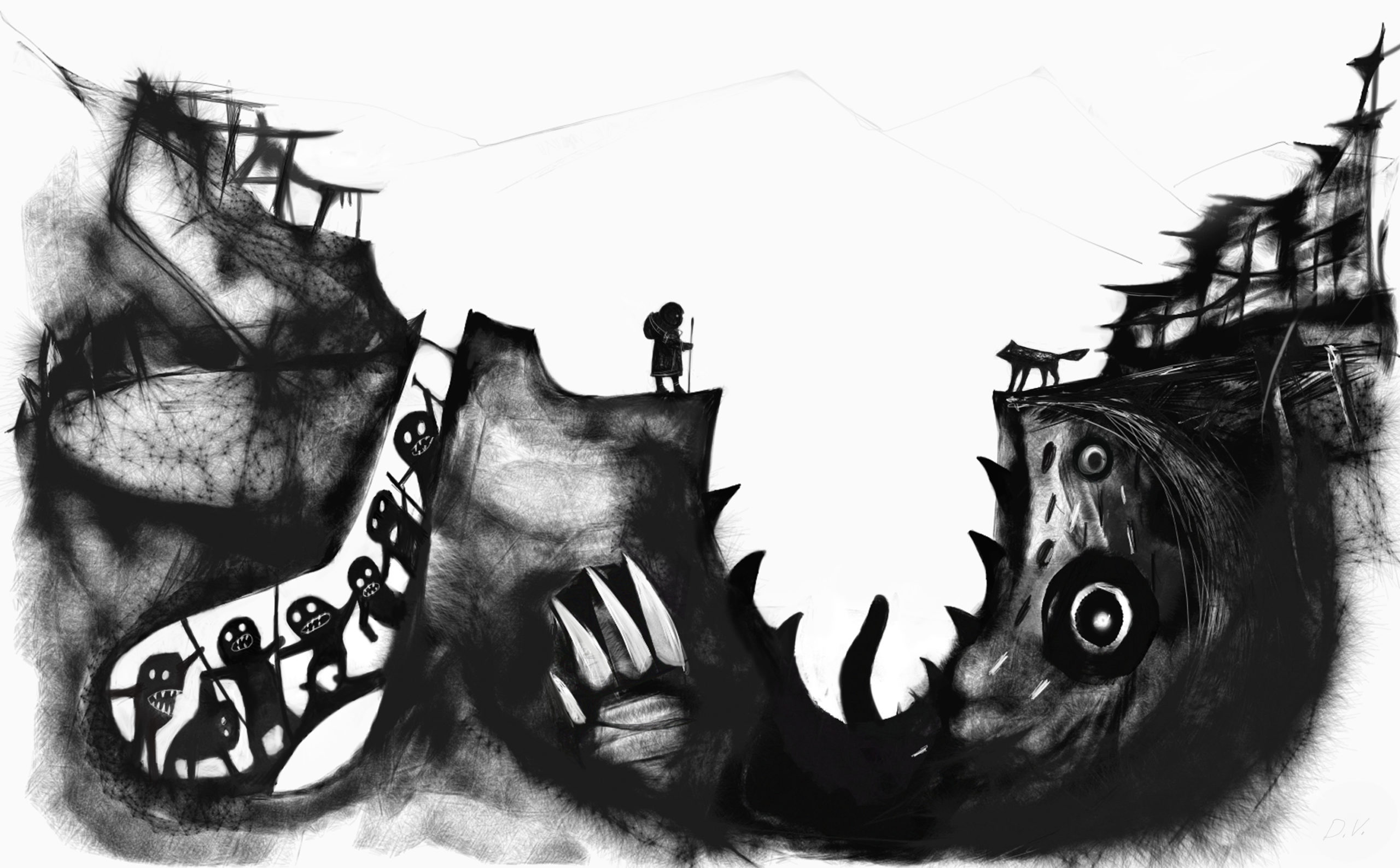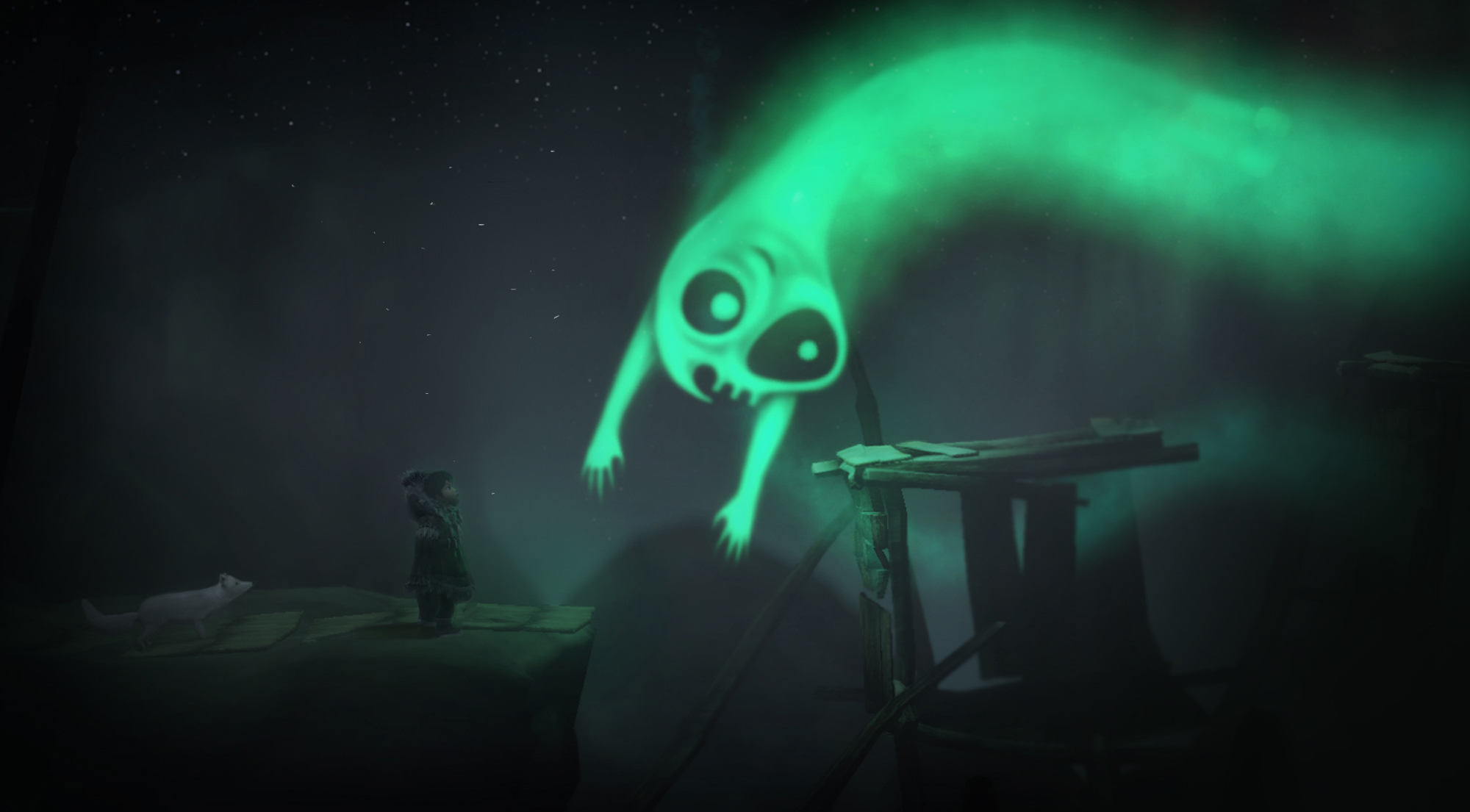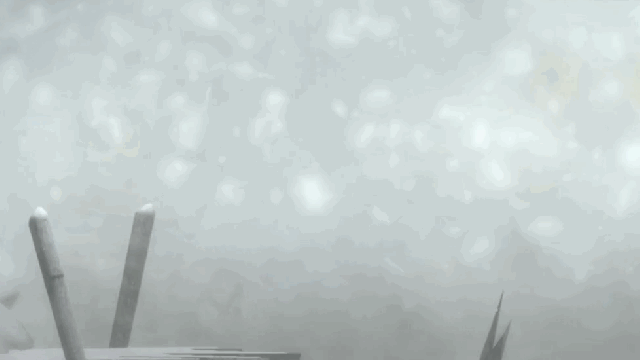A few years ago, an Alaskan indigenous community found themselves with money to invest. Like any investment, the money would ideally multiply itself many times over. The Cook Inlet Tribal Council thought about funding funeral homes and getting into real estate. Instead, they decided to pour their money into a video game.
Money’s not the only thing that the Alaskan native society — made up of eight tribal communities — is investing into Never Alone. The upcoming video game will also hold their culture, artwork and folktales in a vessel designed to carry a sense of the Inuit spirit far away from their southcentral Alaskan homeland. But, yes, the game’s origins initially came from a more pragmatic concern. “We wanted to find a way to chart our own destiny financially,” tribal council CEO Gloria O’Neill told me recently. O’Neill, who came to New York City recently with E-Line Media development partner Alan Gershenfeld to show Never Alone to press, explained that the Cook Inlet community remains reliant on government funding to help maintain services.
So, why a video game? “I just had a sense that we as a people have so much to offer the world,” O’Neill told me. “We want to take back our culture out of the museum. I wanted to make an investment where we could share who we are with the world, we could have a part in creating it and it wasn’t somebody creating it for us.” Gershenfeld said Artists, tribal elders and storytellers from southcentral Alaska are lending their talents to the game.
The game’s main character is a young Iñupiaq girl named Nuna who’s trying to rescue her homeland from an endless blizzard. She meets a mystical arctic fox that help her and their bond isn’t just cute. It also reflects the importance of interdependency, one of the core Alaskan Native values that O’Neill says the community wants to transmit through Never Alone. “We have stories that have kept us alive [as a community] for 10,000 years,” O’Neill said. One such story casts the Northern Lights as the glowing spirits of children who died in the cold. In the folktale, those lost spirits want to snatch up the heads of still-living kids and use them to play with, like soccer balls. To prevent that, kids need to make sure that their hoods are pulled tight on their heads. The purpose of the story is to drive home the importance of bundling up, by invoking the fearsome power of the arctic cold.

Nuna’s adventures will take her through a bunch of other similar folktales. I got a chance to sample a few levels of Never Alone this week and it plays like a fairly standard physics platformer like, say, Limbo. But even at this early stage, the ethereal mood of the art design makes Never Alone feel like its own thing. Never Alone can be played solo or co-operatively, with a friend controlling the fox character. One level I played featured Helping Spirits, giant ghostly creatures that materialised in specific spots. The fox character has a deeper connection with the spirit world and I needed to move him to specific sections of the level to get the Helping Spirits to come out. Once they did, I could jump onto specific parts of their bodies to get to higher and further in the level.

Another chunk of the game featured Sky People that swooped down and snatched Nuna and Fox away if they didn’t hunker down to avoid the clutching, which was another interpretation of the danger of the frigid air presents when the Northern Lights are out. Other environments had deadly gusts of snow that stopped any forward movement. I had to make Nuna and Fox hunker down until the wind abated. And, when I missed a jump or got blown off a ledge, well, let’s just say that the animated reactions of Fox and Nuna were heart-breaking. Nuna slumps to her knees and buries her face in her hands at the loss of her friend while Fox lies down and puts his head between his paws. Manipulative? Sure. But it’s also a good to drive home the idea that more than one life is at stake in this game. There’s a whole community informing the creation of this game.
Local details like scrimshaw artwork and whaling customs will be in Never Alone, and the game’s narration will be in Native language with English subtitles. Some of the unlockables in the game will be videos of Iñupiaq locals talking about their way of life. O’Neill and Gershenfeld both envision a world games movement coming after Never Alone comes out. They say they have already been contacted by communities from Siberia, Hawaii and Amazonian indigenous peoples, all wanting to implant their stories and customs into a video game. “We’re trying to put this idea of inclusive game development out there into the world,” O’Neill told me. “There hasn’t been a serious investment in the portrayals of indigenous people in video games. We really hope Never Alone is able to change that.” Never Alone is due for PS4, Xbox One and PC in late 2014.

Comments
7 responses to “The First Big Video Game Made By Native Alaskans”
This could have some potential. It’s already more visually appealing than most current indie games, and the concept and story sounds refreshing, too. The faces need some animations, though.
However, I’m a bit let down by the fact that from a gameplay perspective it’s a slightly altered Limbo. They might end up improving on it and making it worth playing, but at the moment I’m going to wait and see.
come on! no zombies? no crafting? no procedurally generated voxel world?….pfft ^_^
Looks interesting… it just doesn’t look like it will have much mass appeal.
It’s not my kind of game, but I hope it does well.
I think it could be quite interesting, as for mass appeal I can see it being taken up as trendy game to buy among gaming hipsters whether they be casual gamers or hardcore ones. Especially they’ll get the feeling of being able to support an Inuit community, basically a gamer version of slacktivism.
Sounds interesting to me. I like the idea behind its conception, and the fact people of different cultures are making new ways to tell their stories 🙂
I’m really interested in this game. I saw the trailer awhile ago and understood that it was an entirely indigenous company, but it’s nice to read more about it. A really lovely way to share their culture in a way that’s meaningful to today’s society. I hope it does well for them.